Theresia Veronika Rampisela
The Quest for Reliable Metrics of Responsible AI
Oct 29, 2025Abstract:The development of Artificial Intelligence (AI), including AI in Science (AIS), should be done following the principles of responsible AI. Progress in responsible AI is often quantified through evaluation metrics, yet there has been less work on assessing the robustness and reliability of the metrics themselves. We reflect on prior work that examines the robustness of fairness metrics for recommender systems as a type of AI application and summarise their key takeaways into a set of non-exhaustive guidelines for developing reliable metrics of responsible AI. Our guidelines apply to a broad spectrum of AI applications, including AIS.
Joint Evaluation of Fairness and Relevance in Recommender Systems with Pareto Frontier
Feb 17, 2025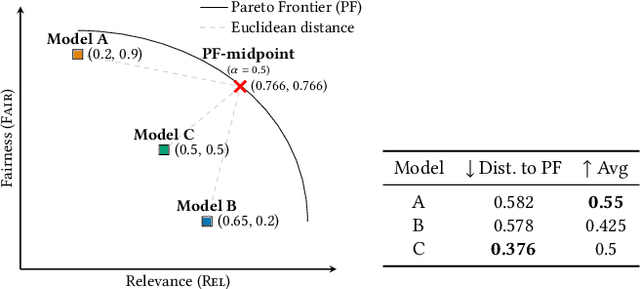

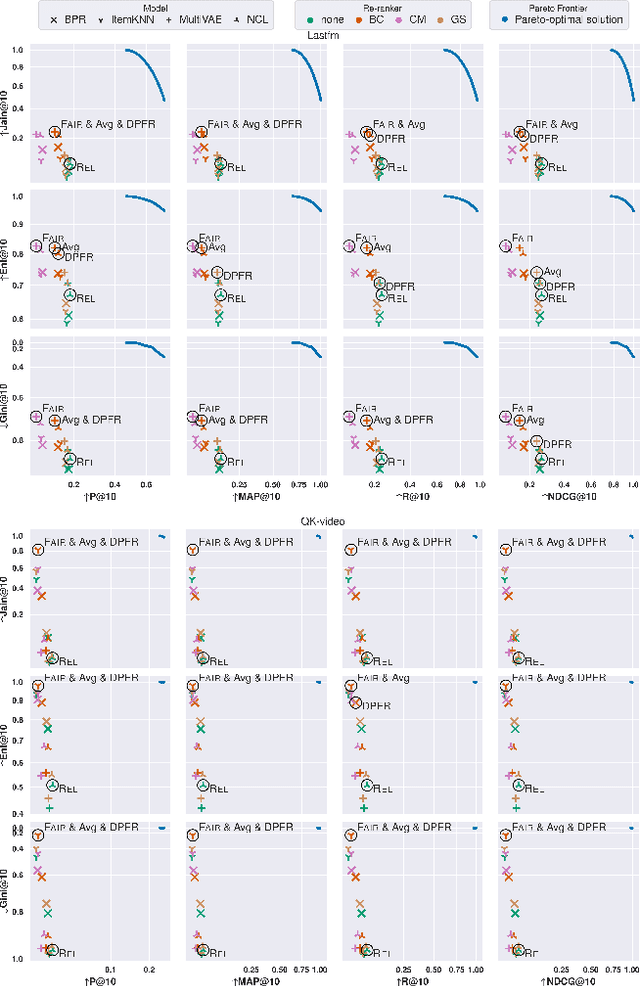
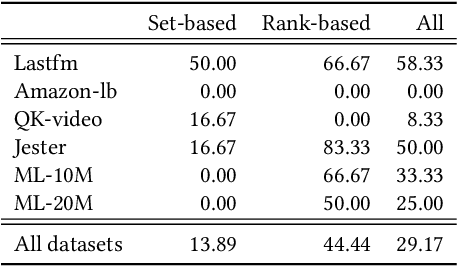
Abstract:Fairness and relevance are two important aspects of recommender systems (RSs). Typically, they are evaluated either (i) separately by individual measures of fairness and relevance, or (ii) jointly using a single measure that accounts for fairness with respect to relevance. However, approach (i) often does not provide a reliable joint estimate of the goodness of the models, as it has two different best models: one for fairness and another for relevance. Approach (ii) is also problematic because these measures tend to be ad-hoc and do not relate well to traditional relevance measures, like NDCG. Motivated by this, we present a new approach for jointly evaluating fairness and relevance in RSs: Distance to Pareto Frontier (DPFR). Given some user-item interaction data, we compute their Pareto frontier for a pair of existing relevance and fairness measures, and then use the distance from the frontier as a measure of the jointly achievable fairness and relevance. Our approach is modular and intuitive as it can be computed with existing measures. Experiments with 4 RS models, 3 re-ranking strategies, and 6 datasets show that existing metrics have inconsistent associations with our Pareto-optimal solution, making DPFR a more robust and theoretically well-founded joint measure for assessing fairness and relevance. Our code: https://github.com/theresiavr/DPFR-recsys-evaluation
Can We Trust Recommender System Fairness Evaluation? The Role of Fairness and Relevance
May 28, 2024
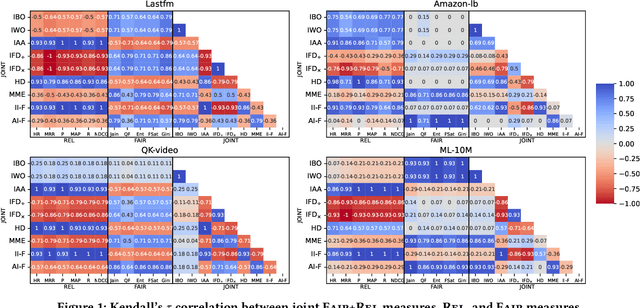

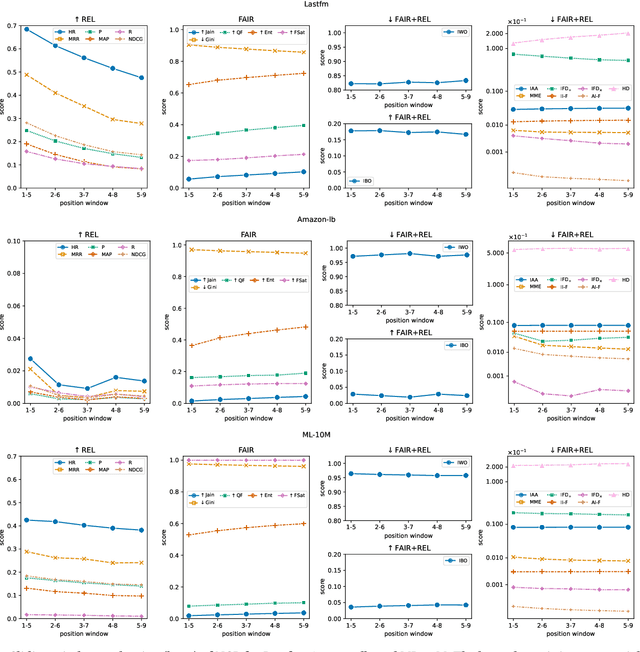
Abstract:Relevance and fairness are two major objectives of recommender systems (RSs). Recent work proposes measures of RS fairness that are either independent from relevance (fairness-only) or conditioned on relevance (joint measures). While fairness-only measures have been studied extensively, we look into whether joint measures can be trusted. We collect all joint evaluation measures of RS relevance and fairness, and ask: How much do they agree with each other? To what extent do they agree with relevance/fairness measures? How sensitive are they to changes in rank position, or to increasingly fair and relevant recommendations? We empirically study for the first time the behaviour of these measures across 4 real-world datasets and 4 recommenders. We find that most of these measures: i) correlate weakly with one another and even contradict each other at times; ii) are less sensitive to rank position changes than relevance- and fairness-only measures, meaning that they are less granular than traditional RS measures; and iii) tend to compress scores at the low end of their range, meaning that they are not very expressive. We counter the above limitations with a set of guidelines on the appropriate usage of such measures, i.e., they should be used with caution due to their tendency to contradict each other and of having a very small empirical range.
Evaluation Measures of Individual Item Fairness for Recommender Systems: A Critical Study
Nov 02, 2023



Abstract:Fairness is an emerging and challenging topic in recommender systems. In recent years, various ways of evaluating and therefore improving fairness have emerged. In this study, we examine existing evaluation measures of fairness in recommender systems. Specifically, we focus solely on exposure-based fairness measures of individual items that aim to quantify the disparity in how individual items are recommended to users, separate from item relevance to users. We gather all such measures and we critically analyse their theoretical properties. We identify a series of limitations in each of them, which collectively may render the affected measures hard or impossible to interpret, to compute, or to use for comparing recommendations. We resolve these limitations by redefining or correcting the affected measures, or we argue why certain limitations cannot be resolved. We further perform a comprehensive empirical analysis of both the original and our corrected versions of these fairness measures, using real-world and synthetic datasets. Our analysis provides novel insights into the relationship between measures based on different fairness concepts, and different levels of measure sensitivity and strictness. We conclude with practical suggestions of which fairness measures should be used and when. Our code is publicly available. To our knowledge, this is the first critical comparison of individual item fairness measures in recommender systems.
 Add to Chrome
Add to Chrome Add to Firefox
Add to Firefox Add to Edge
Add to Edge